Newsletters are having a moment. And in recent years, email has become fashionable again. But this time, it’s not big brands driving the trend.
It’s individual creators.
Creators who want to build a community. And deliver content to their audience, on their terms.
It’s a growing trend in today’s passion economy. And Substack is accelerating the trend with a platform that “makes it simple for a writer to start an email newsletter that makes money from subscriptions“.
Since its founding in 2017, demand for the newsletter platform has skyrocketed. By July 2019 Substack already had 50,000 paying customers (source). A figure that has no doubt grown significantly during the Coronavirus pandemic and a time when freelancers need greater control over their earning potential.
In the past 12 months alone, global searches for ‘Substack’ have increased a whopping 238%. And in a short space of time, Substack has become the number one platform for newsletter creators.
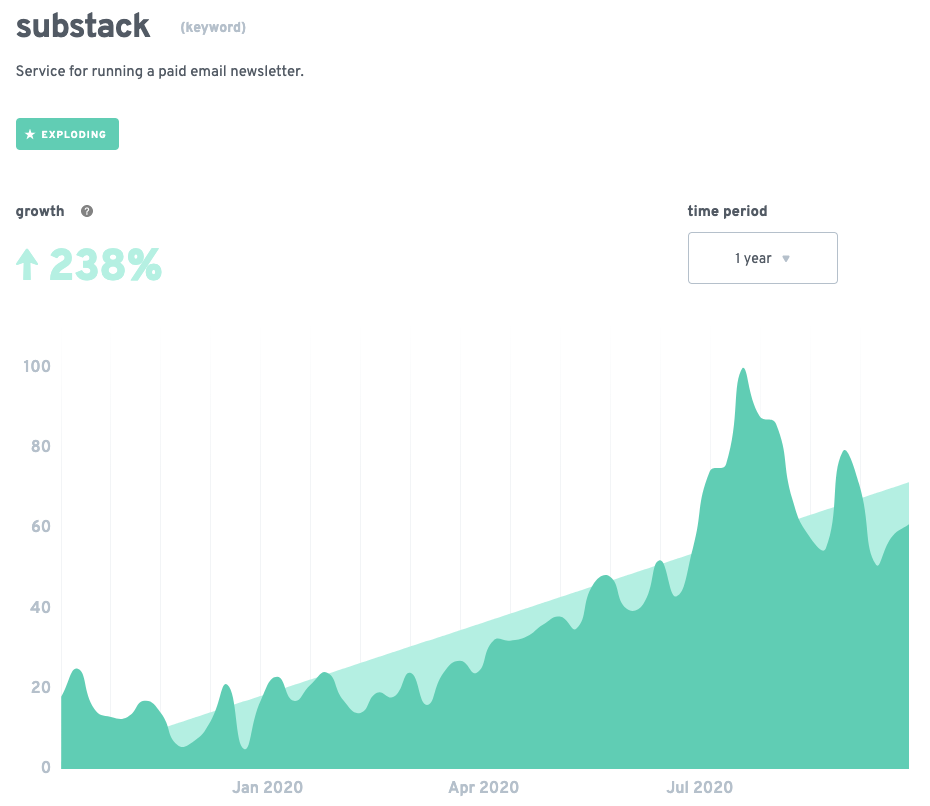
However, Substack is not always the best fit. And many creators are looking for alternatives.
The pros and cons of Substack
As a platform designed specifically for newsletter entrepreneurs, Substack offers plenty of great features.
Pros
- Easy to set up – in as little as an hour you can have your ‘About’ page sorted and main settings edited
- Automatically publish newsletters online – this serves as an archive of past issues and it’s all automated
- Free to use – until you start monetising your newsletter with paid subscriptions
- Comments function – this generates conversation and engagement from your audience
- Direct integration with Stripe – which enables you to set up subscription payments
- Third-party advertising pixels – for tracking campaign performance
But despite this list of benefits, Substack isn’t for everyone. And it comes with a few disadvantages.
Cons
- Lack of customisation – which means the vast majority of newsletters published on Substack look the same, as do the opt-in pages and newsletter archives (check out the images below as examples)
- You have to pay to use your own custom domain – Substack recently provided users with the option of adding a custom domain but at a cost of $50
- Cannot export content – if you wanted to move platforms, you’d have to manually copy and paste the content you have in Substack as it’s not an open-source platform
- Cannot create a welcome email sequence – you have to rely on just the one welcome message
EmailOctopus + Carrd – a better alternative to Substack
The lack of customisation in Substack is a big turn off for many newsletter creators. Especially those who want to inject their personality and individuality into the design of their newsletters. Not just the words.
Thankfully, there’s another option. One that gives you more control, more flexibility and more creative freedom.
By combining EmailOctopus (an email marketing platform) and Carrd (a one-page landing page builder), you have all the tools you need to start a newsletter. And build a fully customised website to host your sign-up form.
With this pairing, you can make your newsletter and its website as unique as you are. The sky really is the limit! Just look at these three examples.
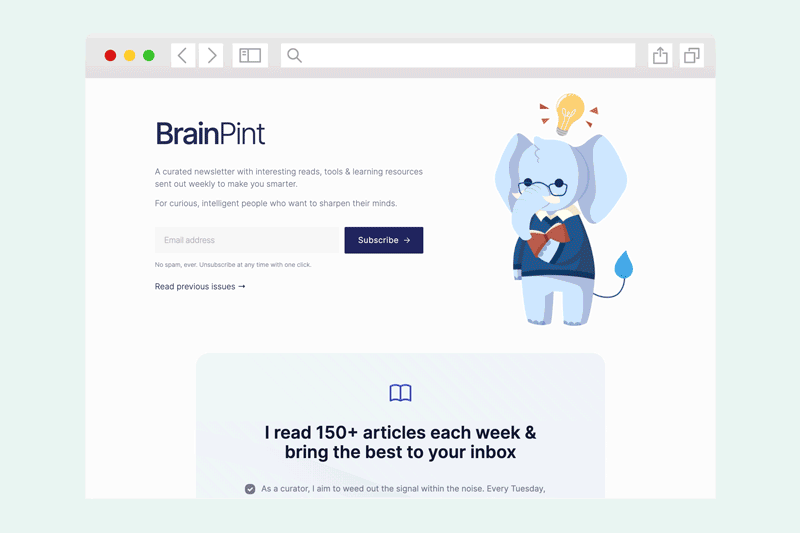
The pros and cons of setting up your newsletter in EmailOctopus
Combining a website with an email marketing platform gives you much greater control and flexibility over your editorial-style newsletter.
It does require more set up but it’s worth it for the advantages you get with it.
Pros
- You can use a custom domain for free – this gives you full control over the domain name and URL structure, and unlike with Substack, you don’t have to pay for this privilege
- Ownership – with your own domain, you own all the content on your website and the SEO value you accumulate
- Greater customisation – you can design the newsletter of your dreams and stamp your personality and individuality all over it with HTML
- Advanced email features – you’re able to segment your list, create multiple lists and automate entire welcome email sequences
- More integration options – you can connect your website and subscriber list with a greater choice of online apps to do even more with your newsletter
- Room to grow – integrations give you the option to take your newsletter to the next level and offer your subscribers more benefits, such as digital products (e-books, online courses etc.)
I chose EmailOctopus because of the simplicity and how user-friendly it is. And the customer support staff do an absolutely phenomenal job.
Nic Getkate, founder of The Slice – read the interview
Cons
- Longer time to set up – combining multiple platforms does mean it takes more time to get your tech stack in order
- More tech to learn – as it’s not an all-in-one solution, you do have to familiarise yourself with more apps (though thankfully, these are all easy-to-use platforms with a brief learning curve)
📖 Read our nine-step card to creating your first email newsletter 📖
Who this alternative to Substack is best for
The combination of EmailOctopus and Carrd to build your email newsletter is ideal if you:
- want to own your domain and the SEO value you create without being charged extra for it
- plan to include screencasts in your newsletter
- want more control and flexibility over the design of your newsletter
- might one day want to do more with your website and give your audience the ability to search through and read older content
- want to integrate your newsletter with a self-hosted blog
- don’t mind investing more in the initial set up to get it working
- don’t need an RSS feed to automate blog content pulling into your newsletter
If that sounds like you, give it a go! Both EmailOctopus and Carrd offer free plans so you can test out the waters before committing.
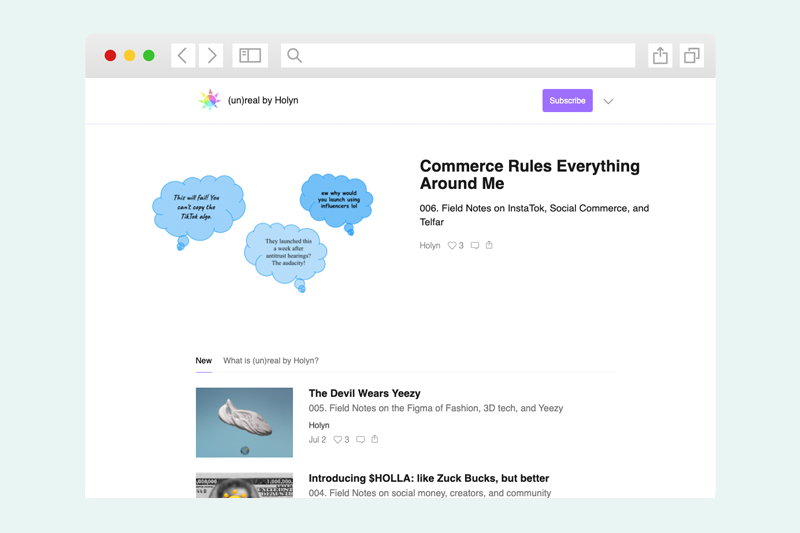
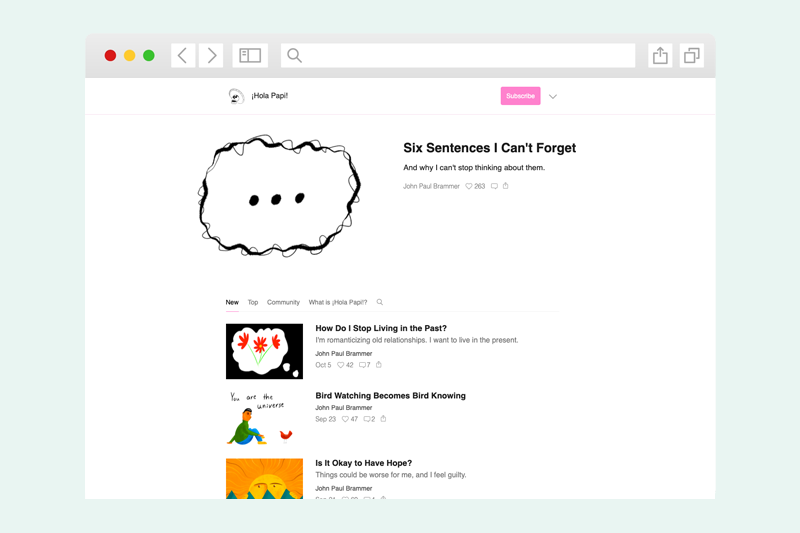
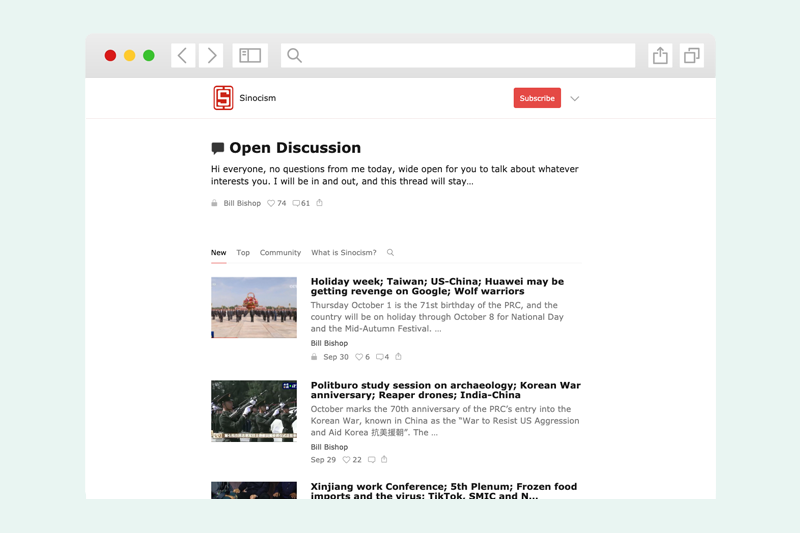
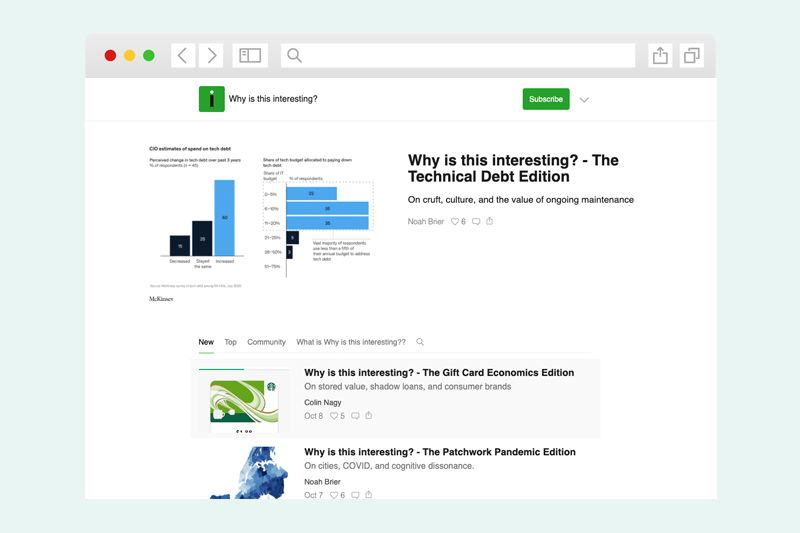
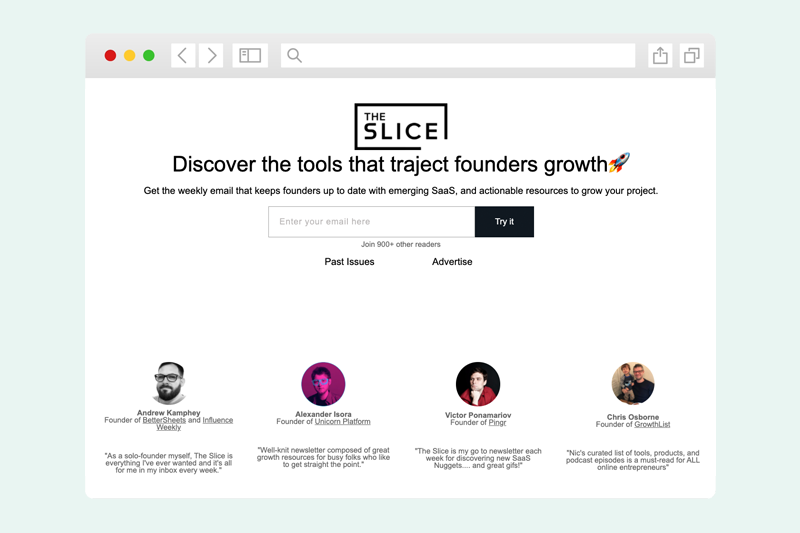
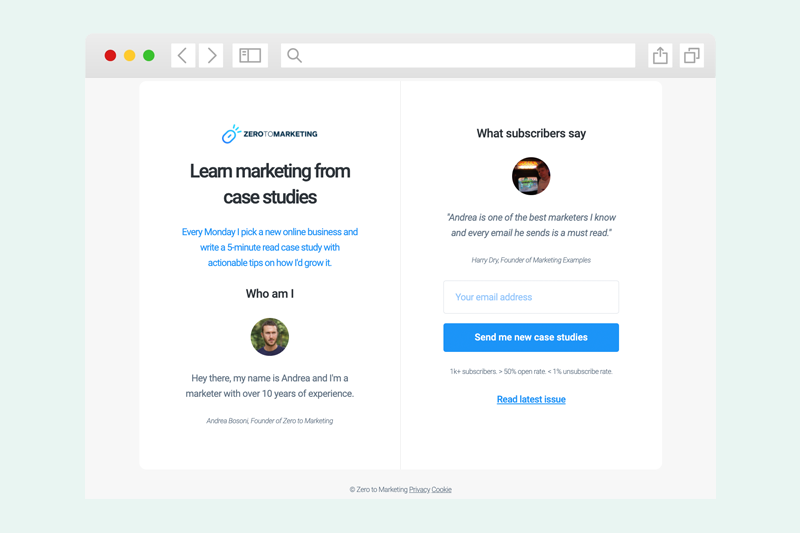


No Comments
Leave a comment Cancel